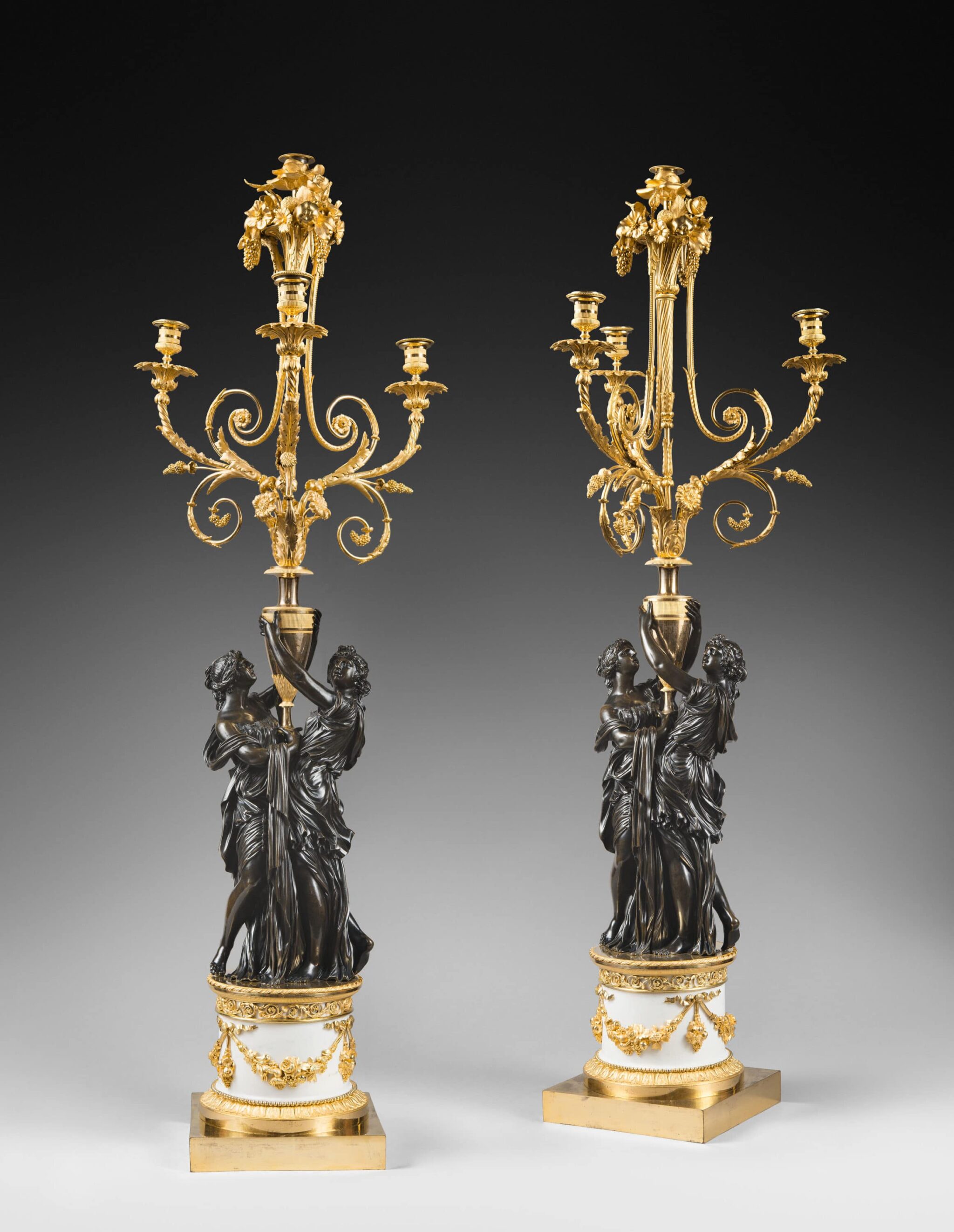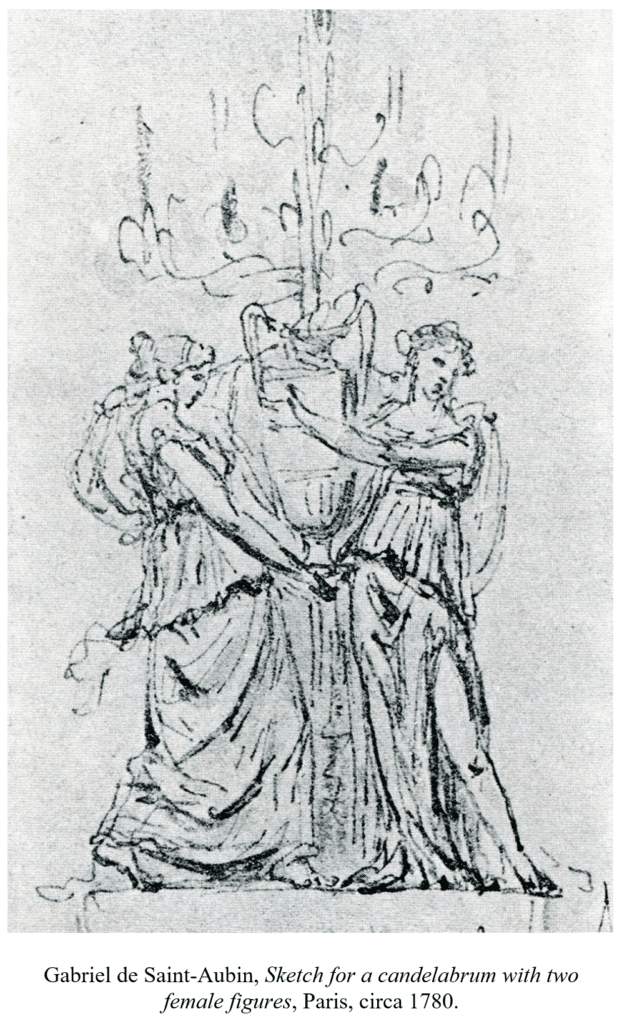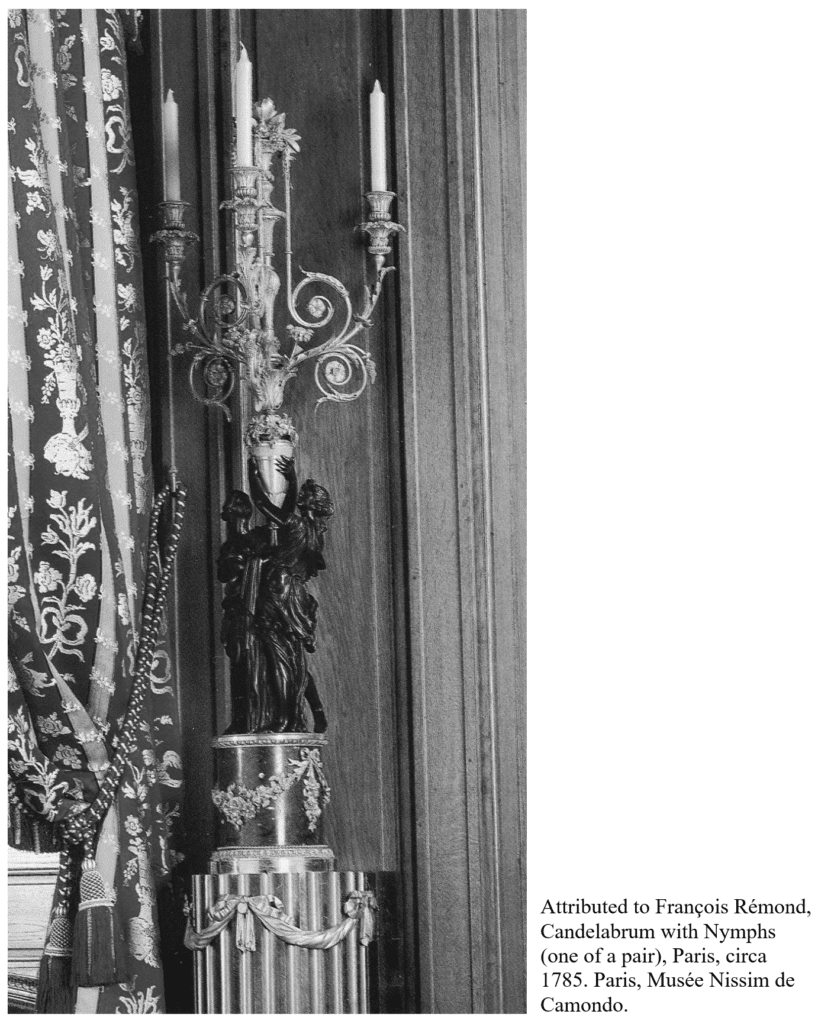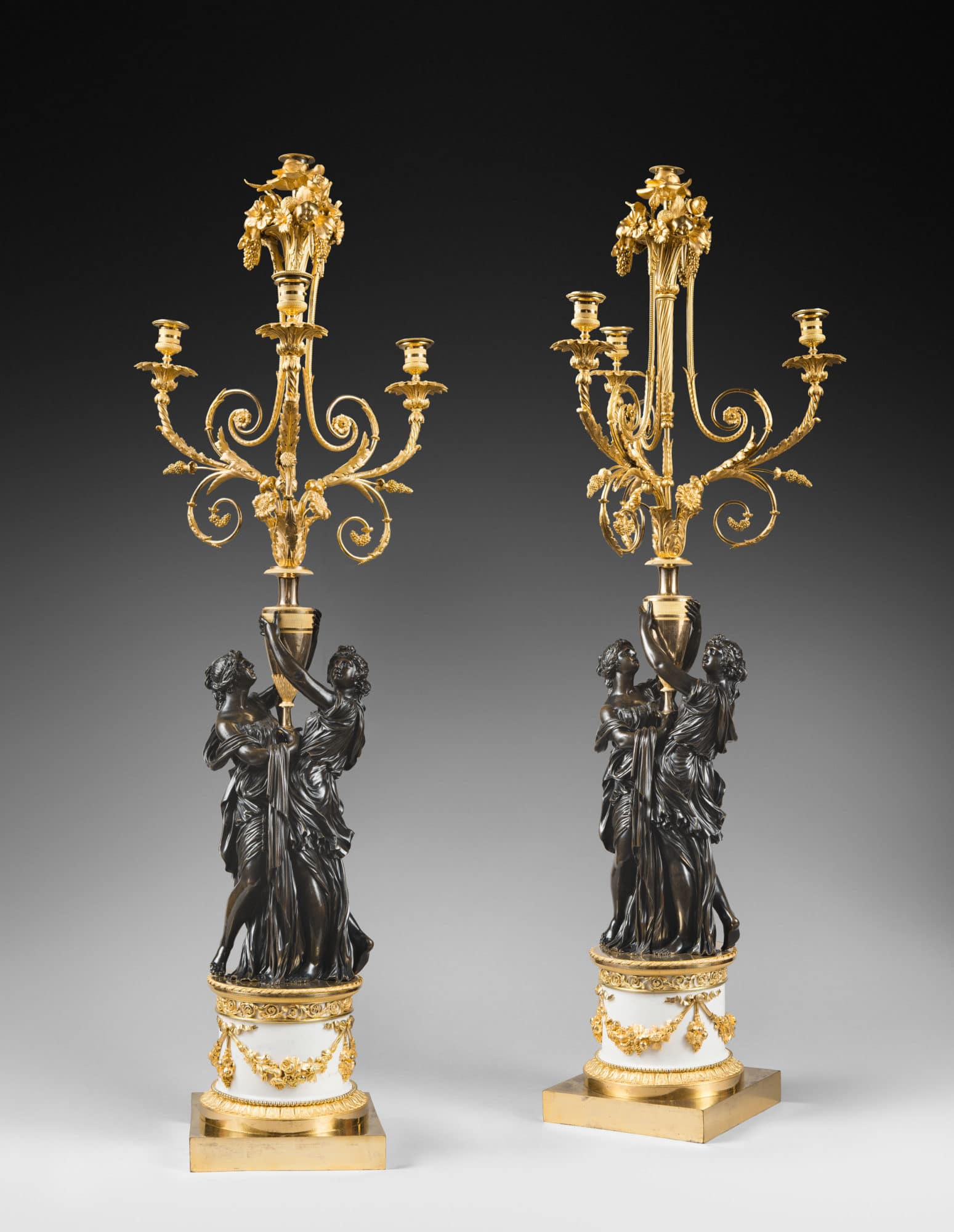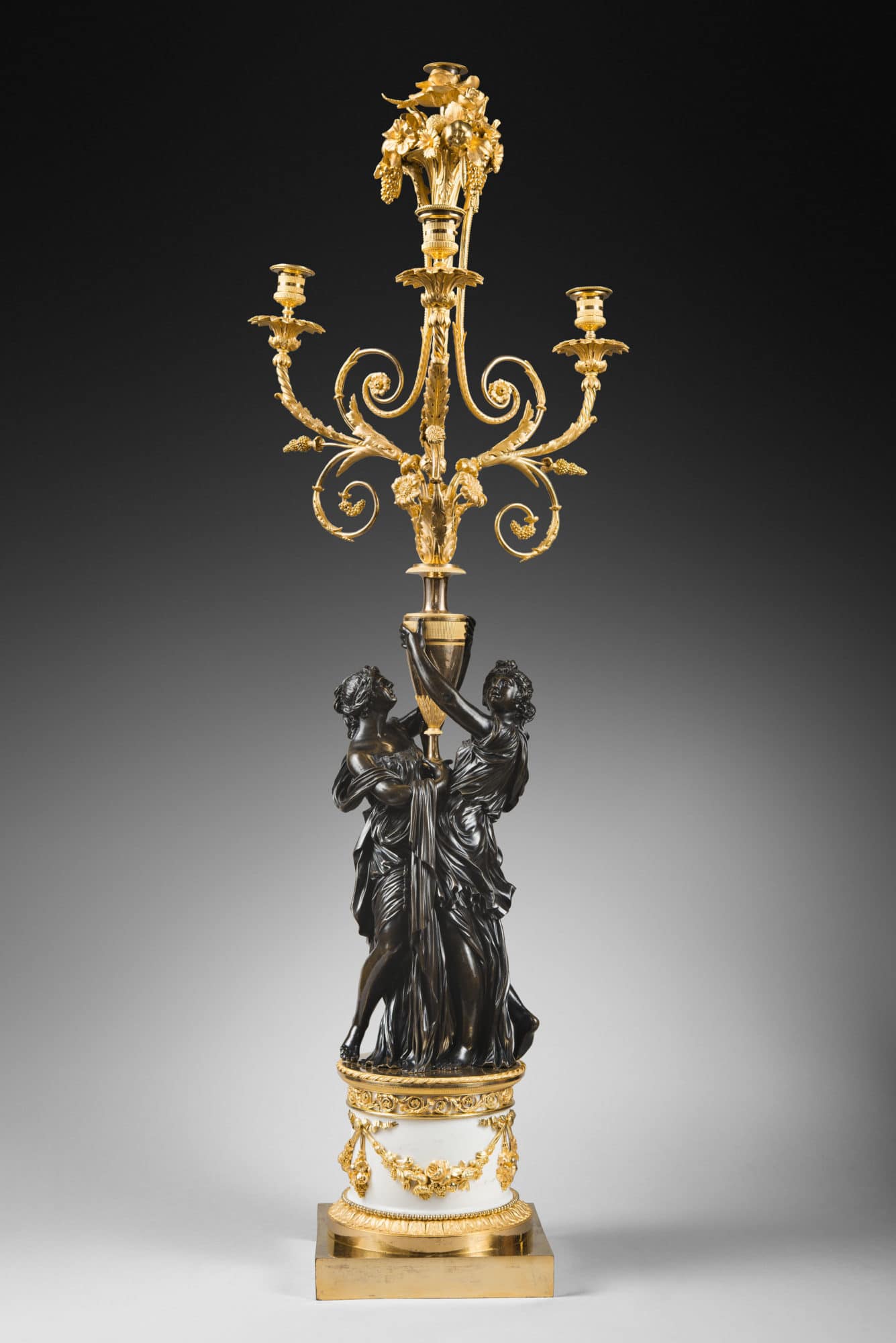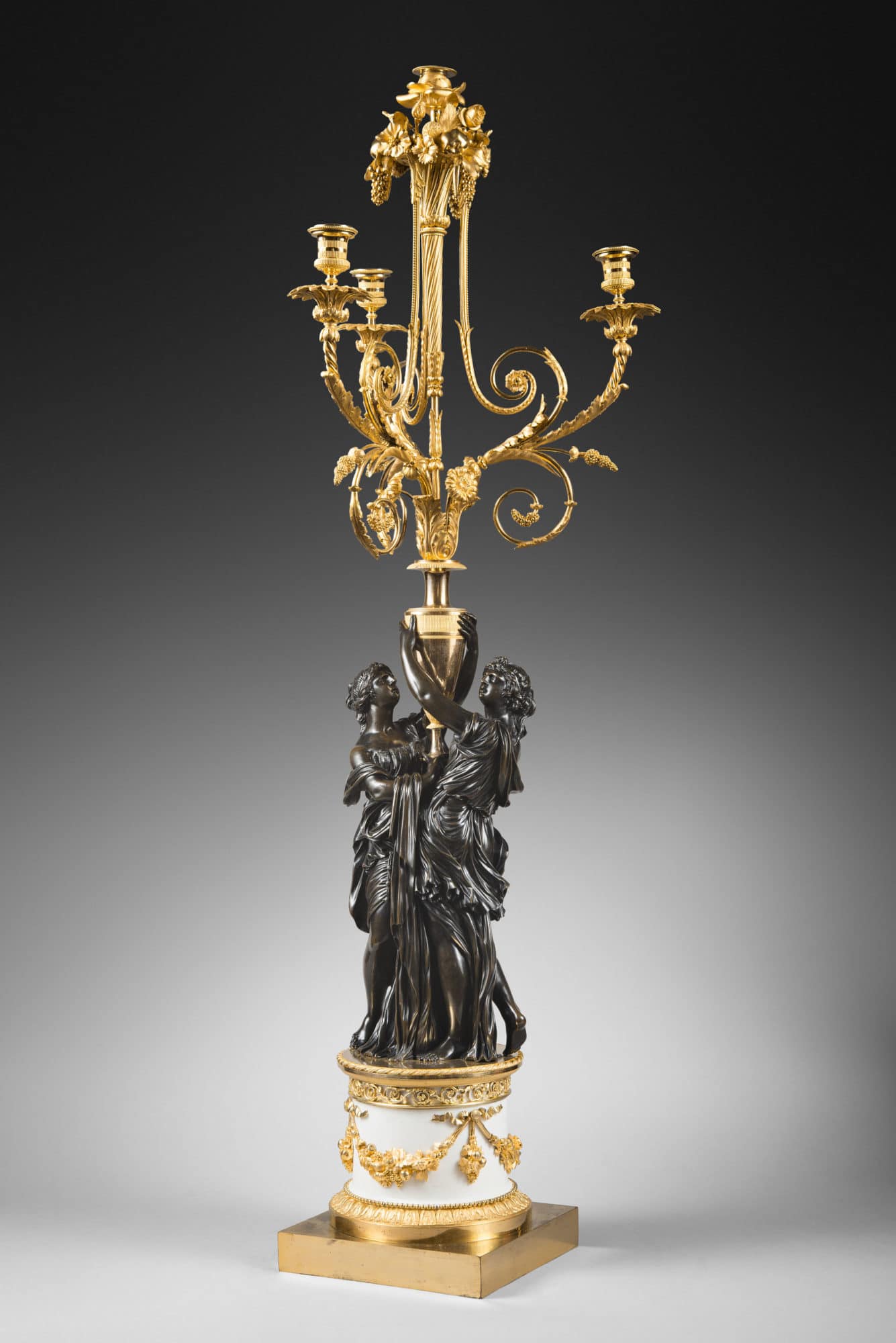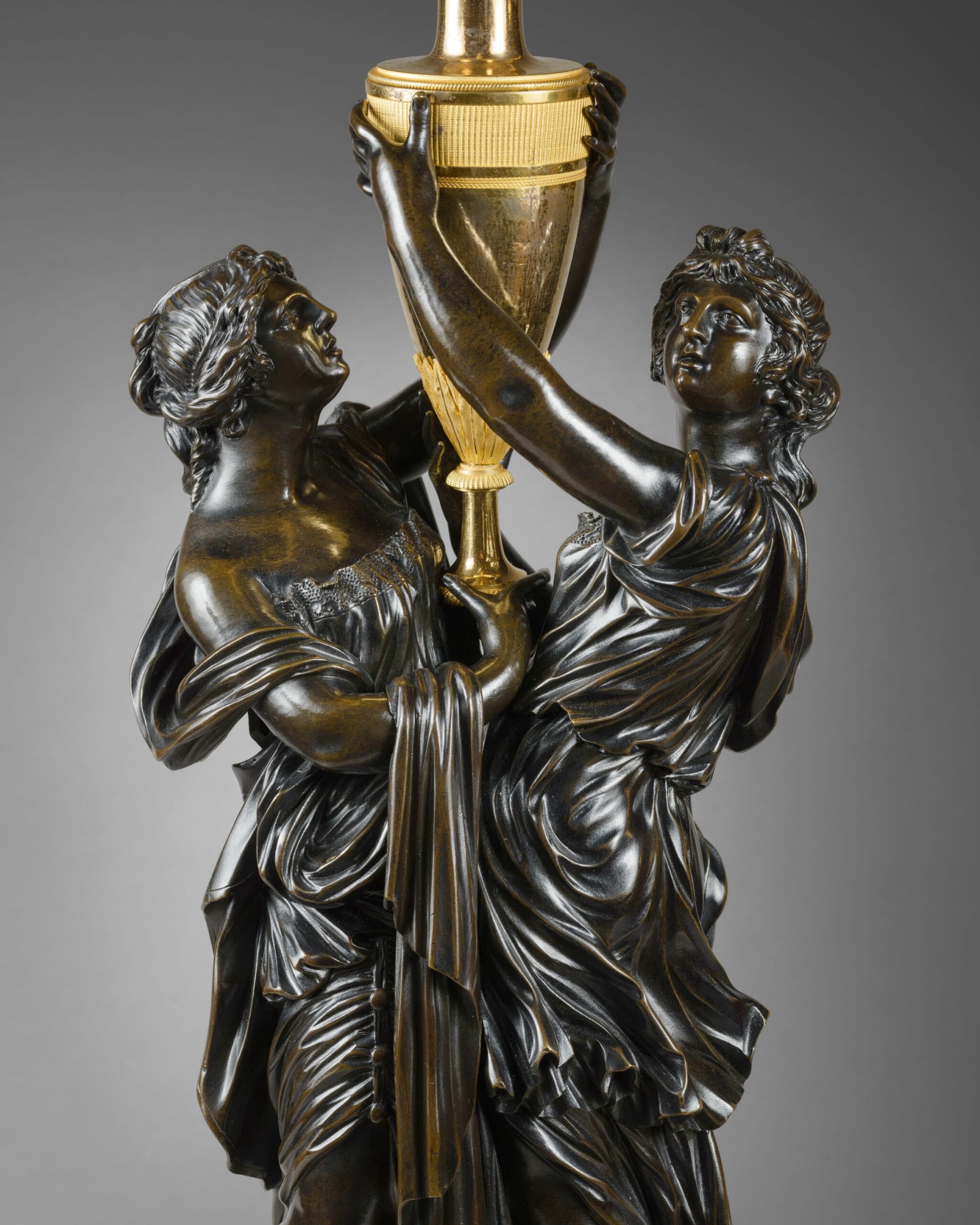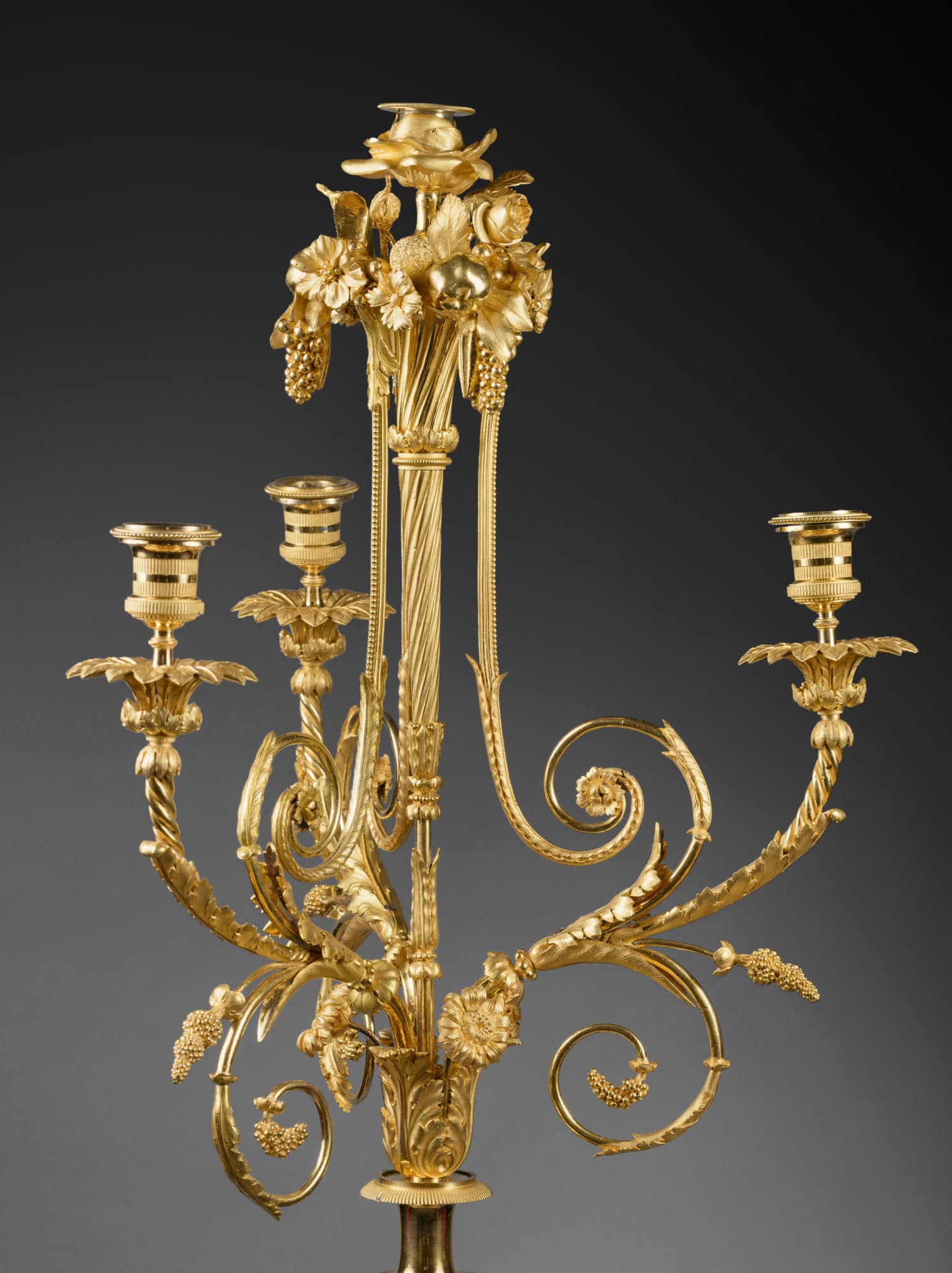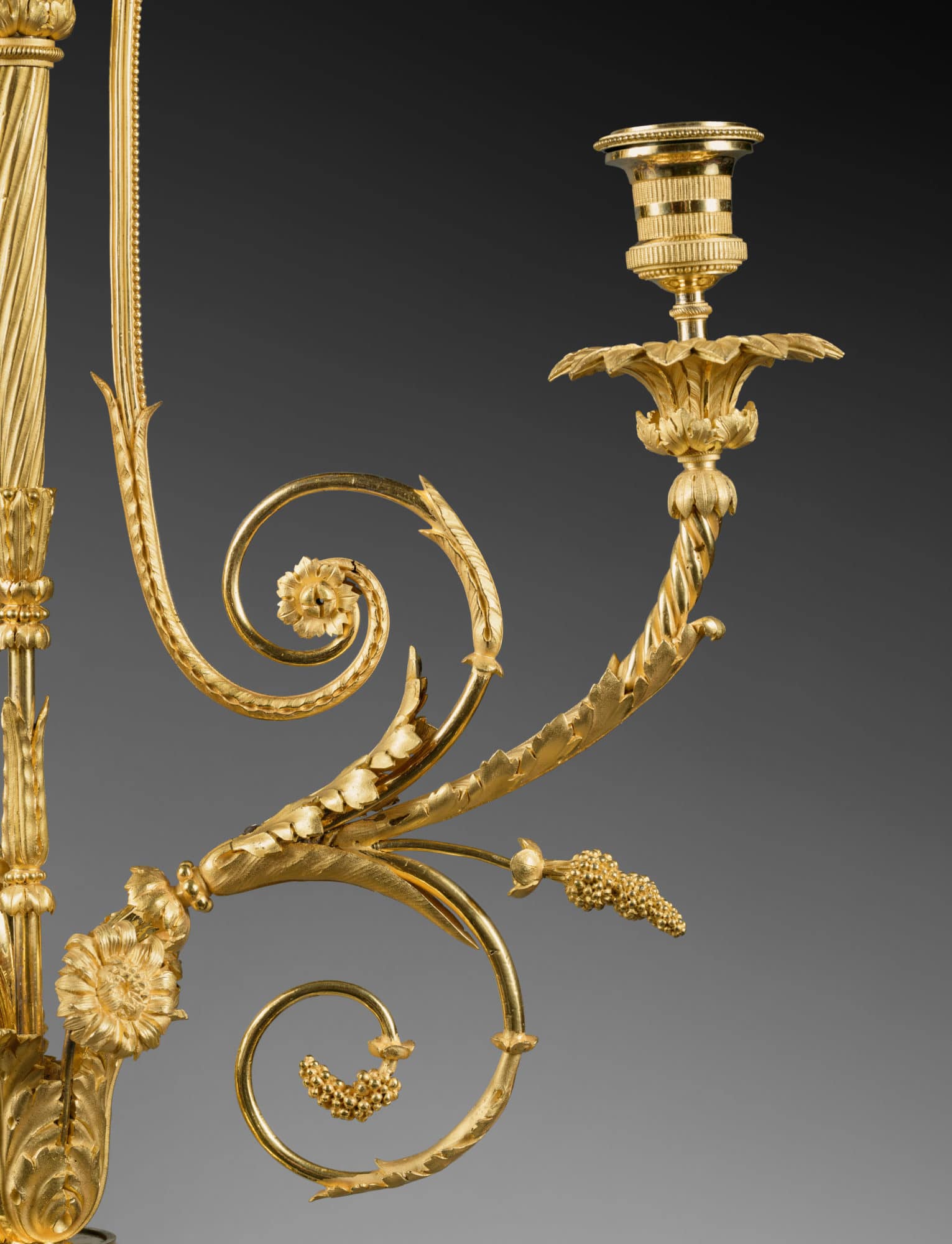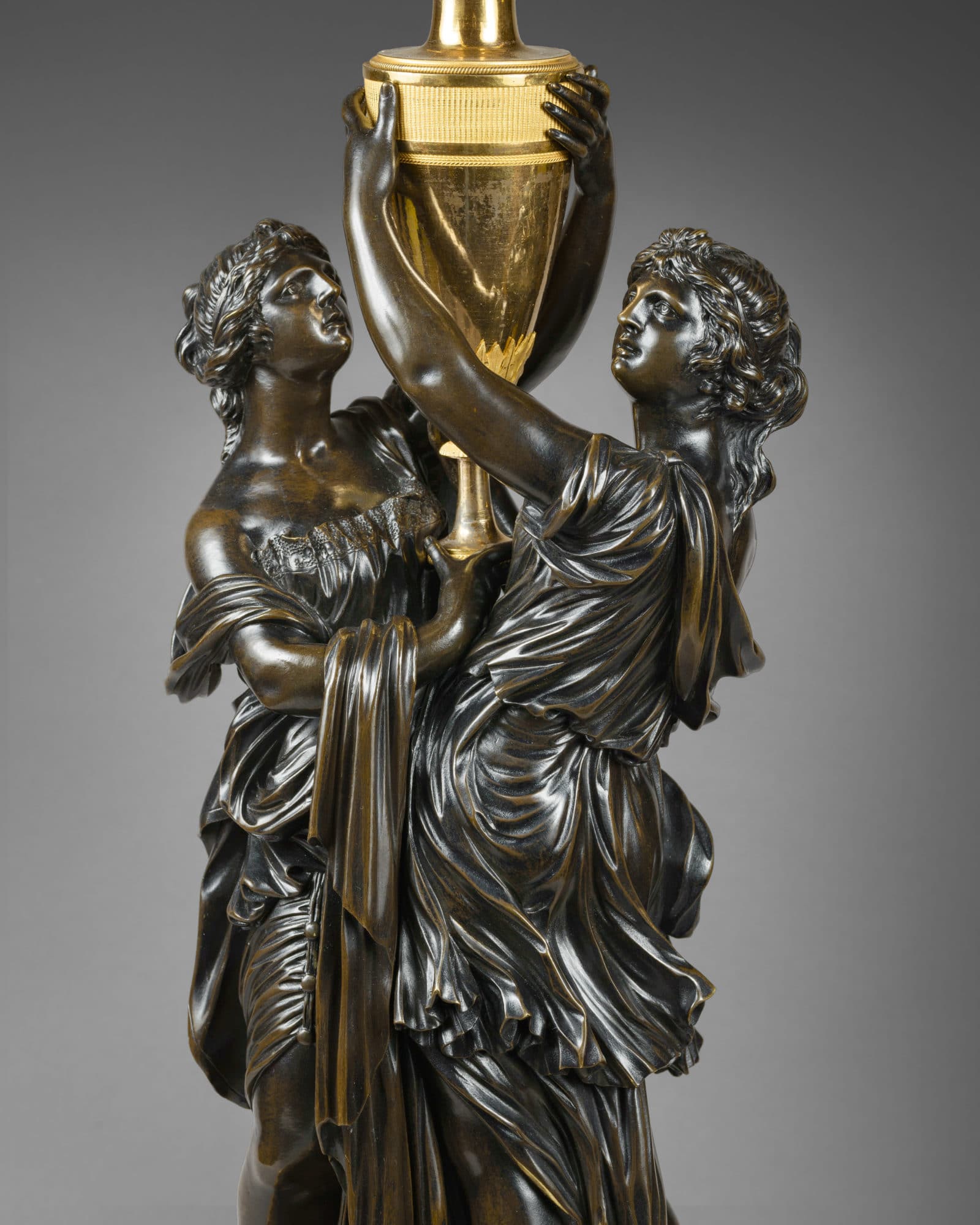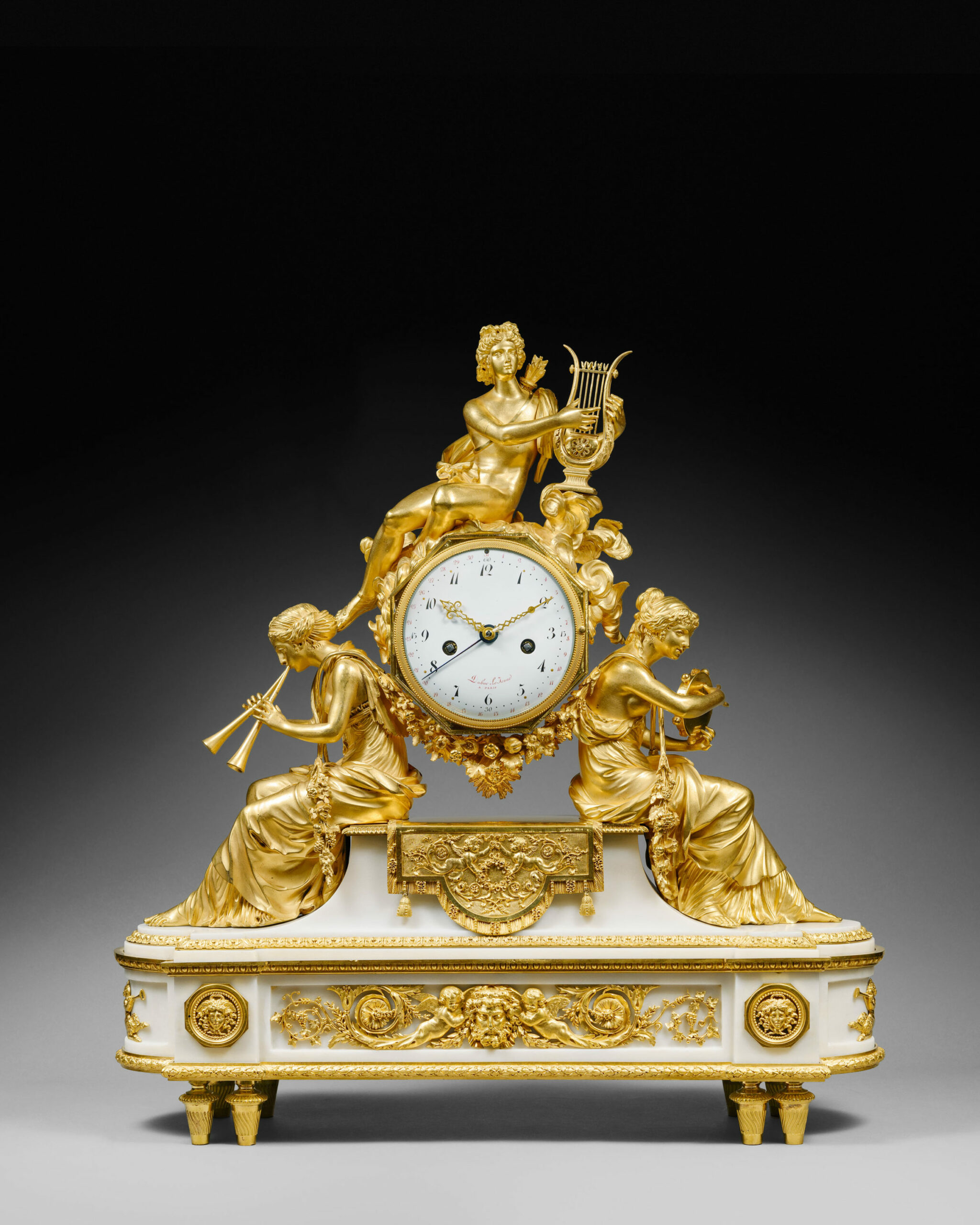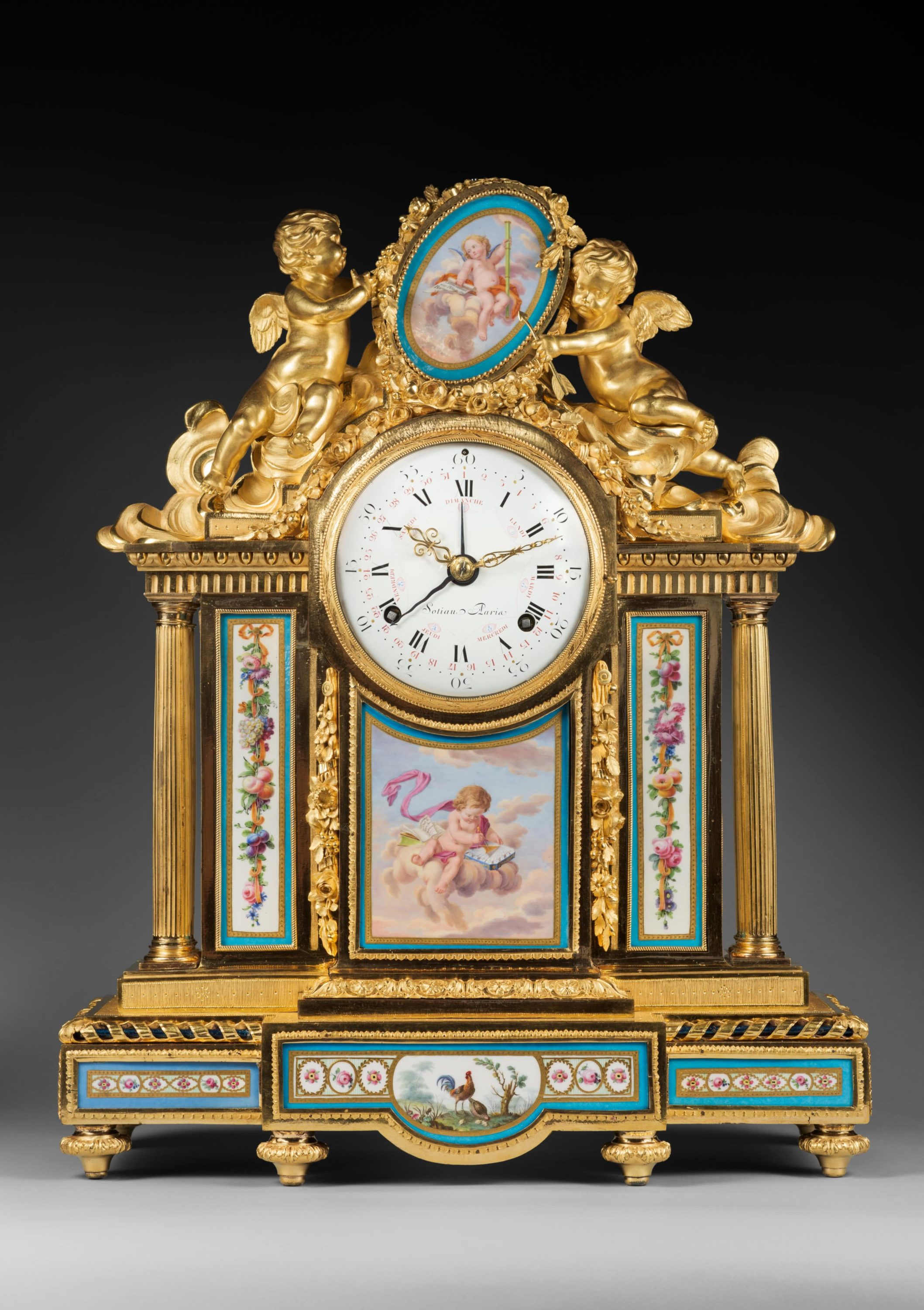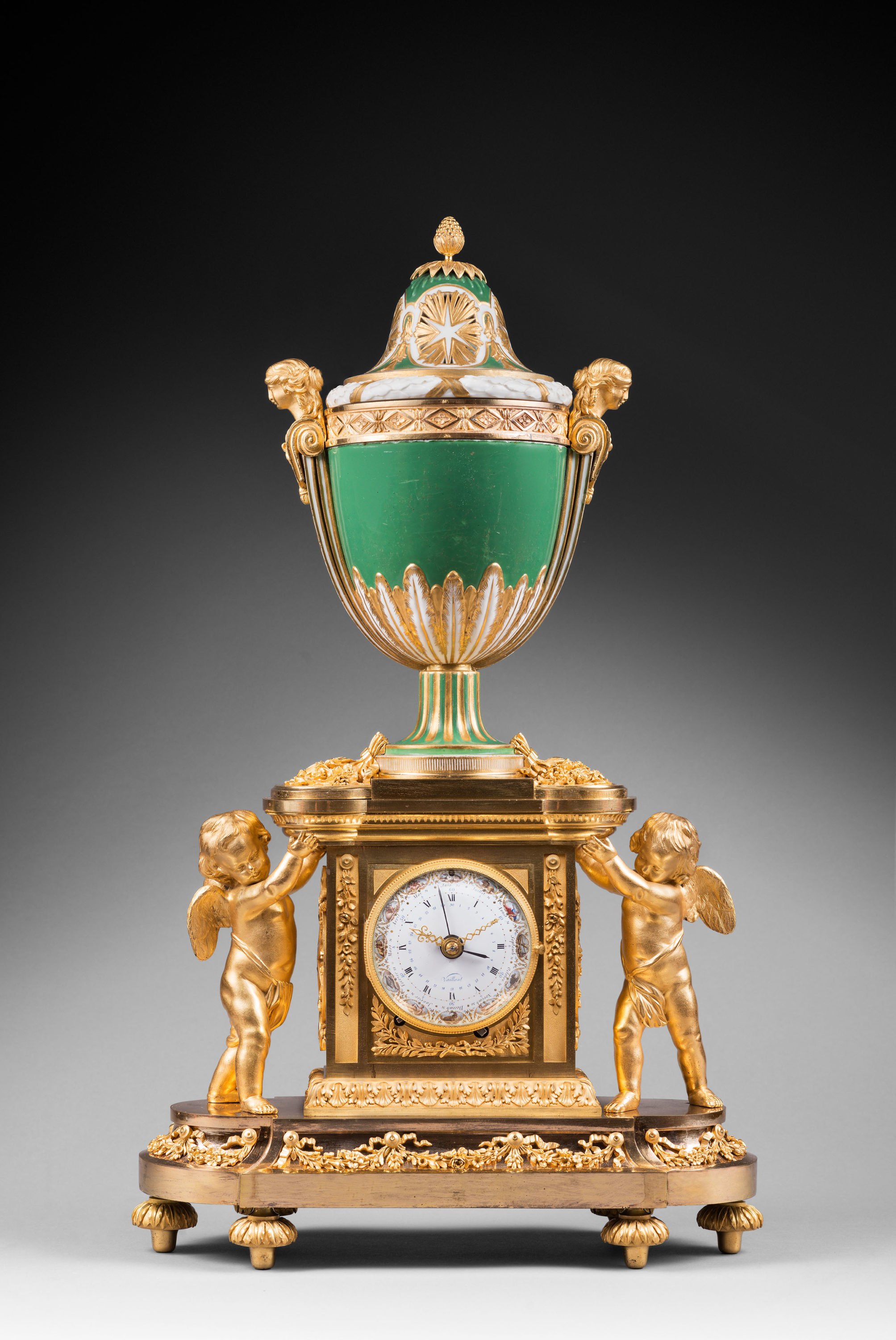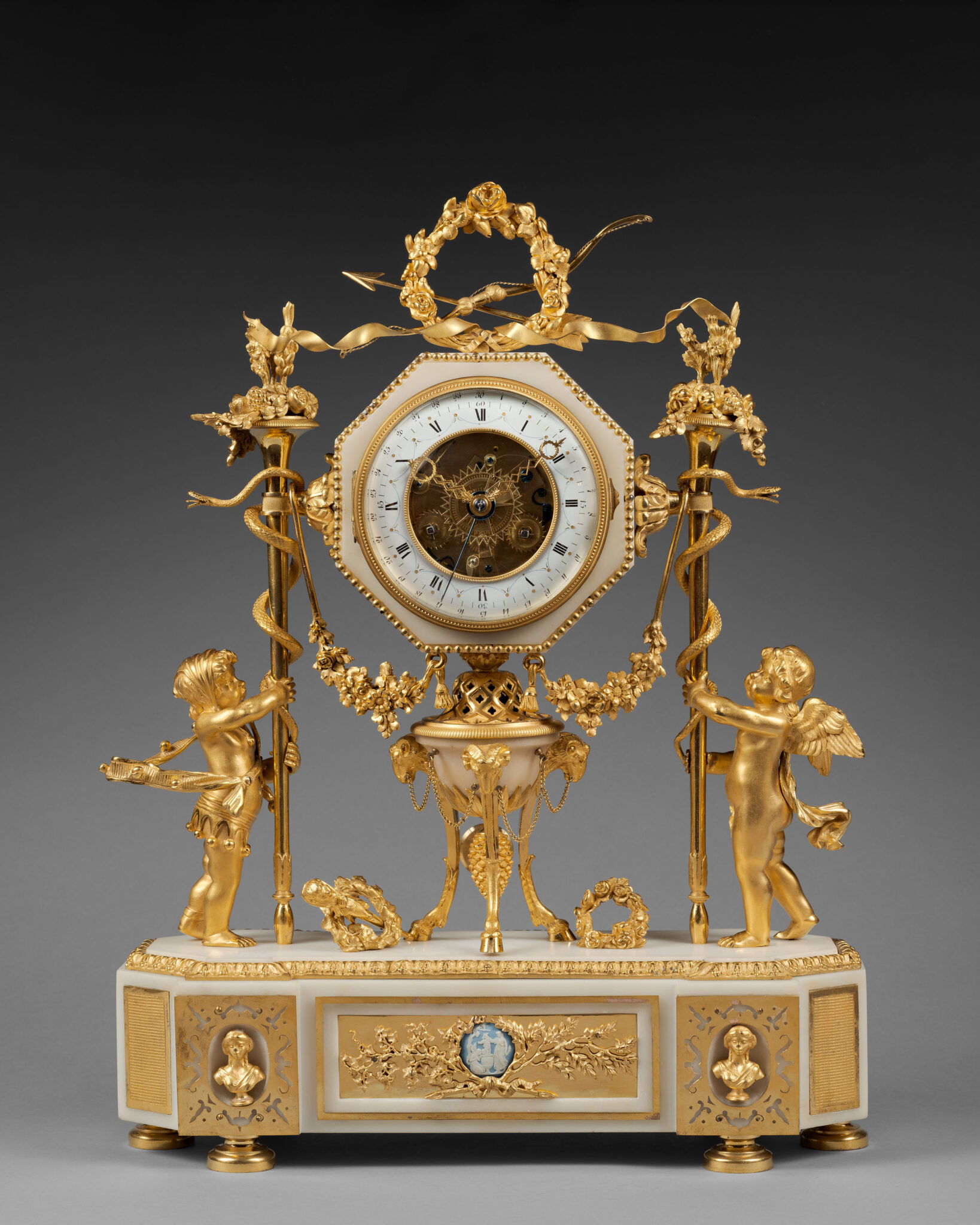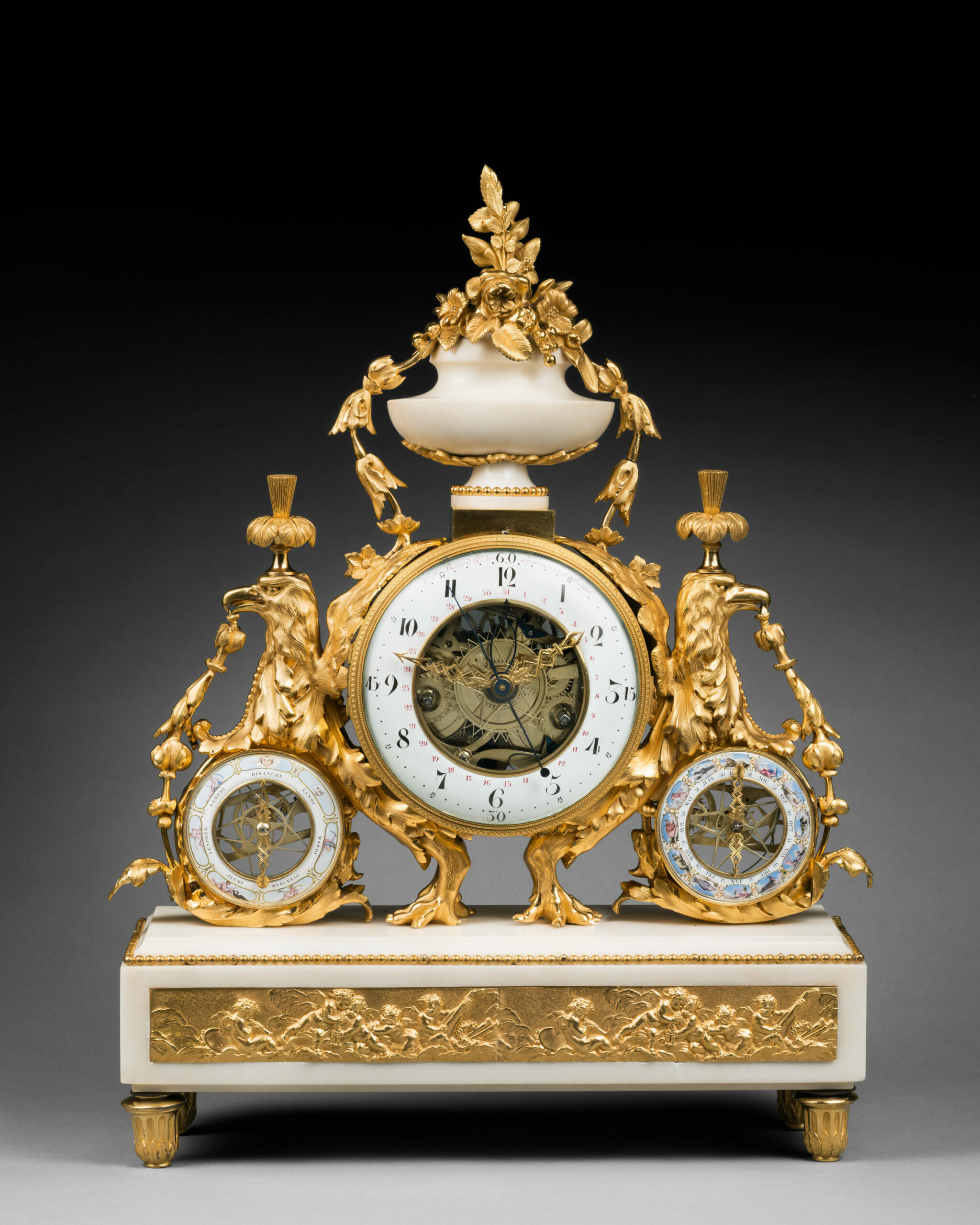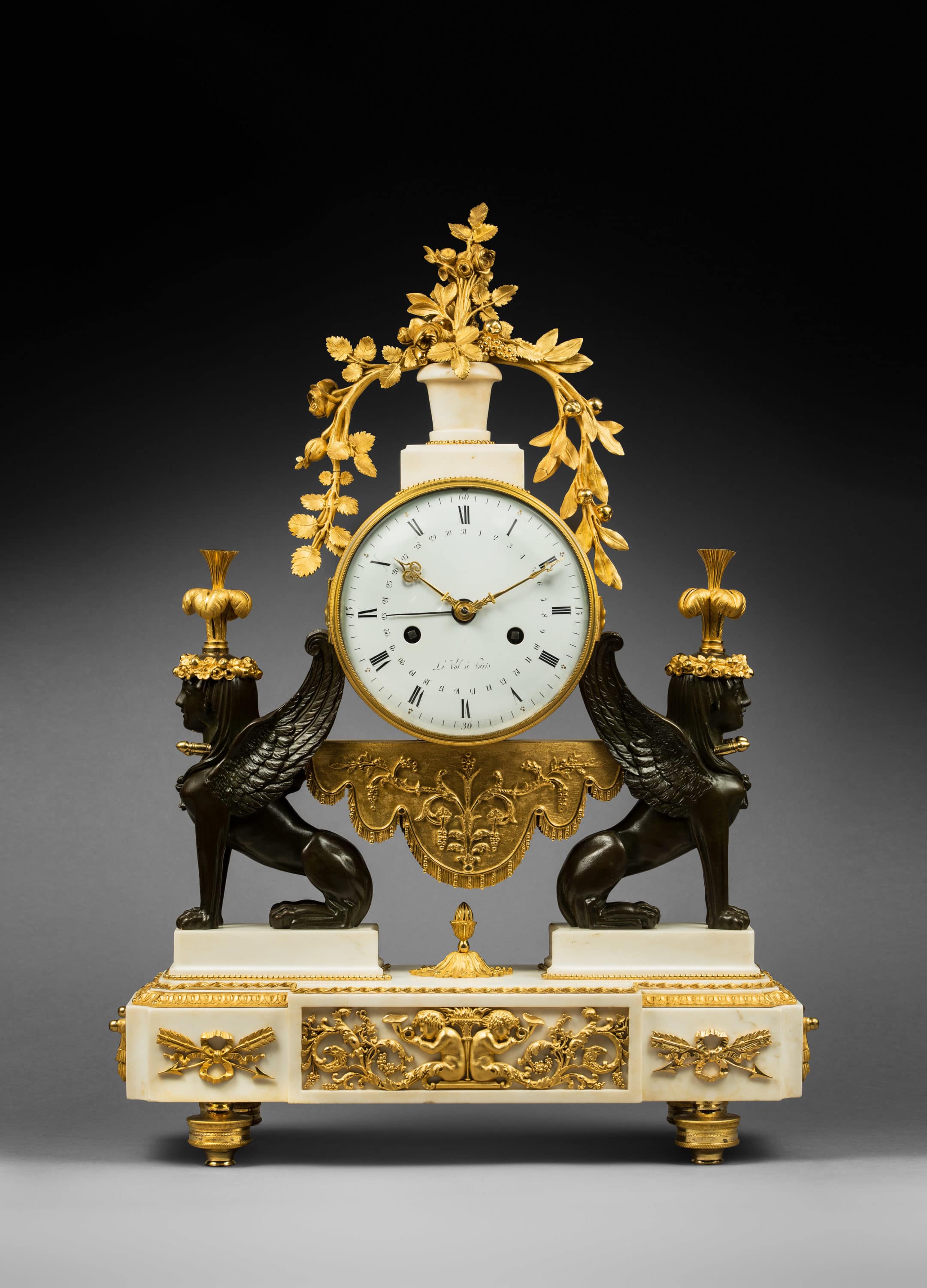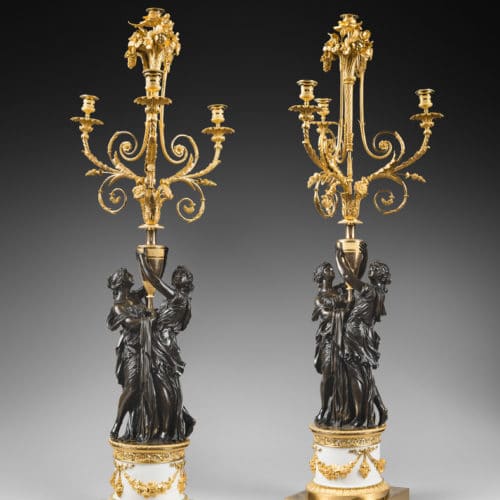Exceptional Pair of Large Patinated and Matte and Burnished Gilt Bronze and White Carrara Marble Four-Light Candelabra
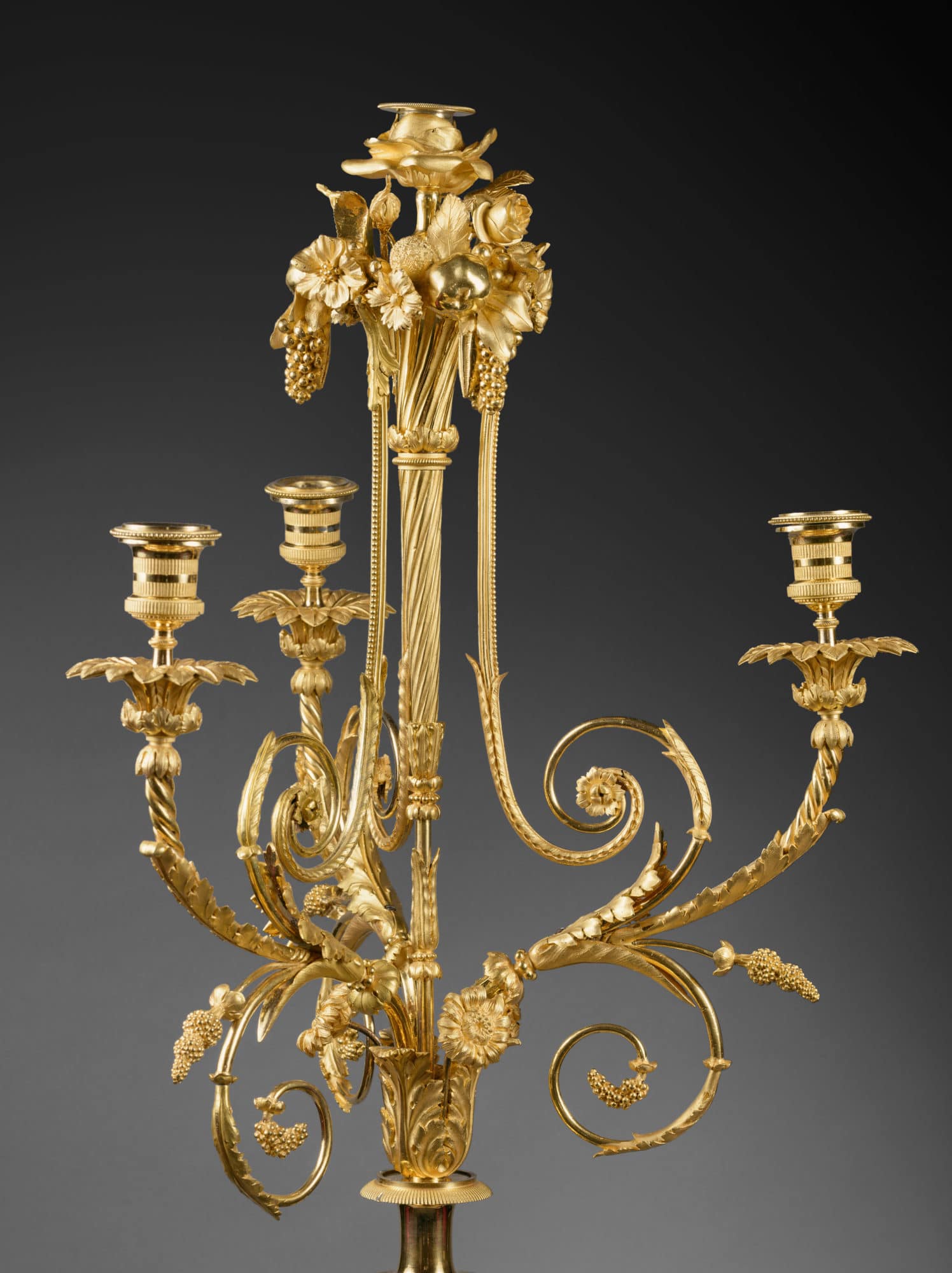
Attributed to François Rémond
Undoubtedly Made Under the Supervision of Dominique Daguerre
Paris, Louis XVI period, circa 1785
Provenance:
Formerly in the Wildenstein collection, Paris.
Each candelabrum, made entirely of patinated and matte and burnished gilt bronze, is composed of a group of two magnificent young women dressed in classical tunics, one of whom turns her head toward the spectator. They support a neoclassical vase with chased friezes and a spreading foot, which issues a bouquet of four scrolling light arms with a spiral-fluted central stem, which terminates in a bouquet of fruit and leaves that support a nozzle and drip pan. Three other branches, whose double scrolls are adorned with acanthus leaves, rosettes and bunches of grapes, each have a further curved stem that is decorated with leaves and fluting, which terminates in a bouquet of petals that support a nozzle adorned with a mille-raies frieze, which is surmounted by a drip pan with a gadrooned frieze. The round white Carrara marble bases are adorned with gadrooned bands, bead friezes, stylized leaves, and pierced seeded scrolls and spiral beaded stems. They are further decorated with flower and leaf swags attached to pastilles with bows. They are set on square bases.
The preliminary sketch for this exceptional pair of candelabra was inspired by two plaster groups that sculptor Etienne-Maurice Falconet (1716-1791) exhibited at the Salon of 1761; they were sketched in the margin of the Salon brochure by Gabriel de Saint-Aubin, as was another drawing by Gabriel de Saint-Aubin, illustrated in H. Ottomeyer and P. Pröschel, Vergoldete Bronzen, Die Bronzearbeiten des Spätbarock und Klassizismus, Band I, Munich, 1986, p. 254 and 284, figs. 4.7.1 and 4.14.11.
Although Falconet’s groups were meant to be cast in silver, they were a great influence on late 18th century Parisian bronze casters. Certain candelabra, including a much smaller model that was formerly in the collection of the Marquise de Ganay, née Ridgway (sold Paris, Me Lair-Dubreuil, Galerie Georges Petit, May 8-10, 1922, lot 234) faithfully reproduce these designs. A few rare pairs of identical candelabra are known, featuring variations in the treatment of the bases and light branches. One such pair, formerly in the Lévy collection, was sold in Paris by Me Lyon, Galerie Georges Petit, June 18-19, 1917, lot 160. A second pair, formerly in the Galeries Hartman, is illustrated in H. Ottomeyer and P. Pröschel, op.cit., Munich, 1986, Band I, p. 284, fig. 4.14.10. A third pair, dating from the late 18th or early 19th centuries, is on display in the Pavlovsk Palace of Saint Petersburg (shown in A. Kuchumov, Pavlovsk, Palace & Park, Aurora Art Publishers, Leningrad, 1975, p. 221, fig. 177). One further similar pair, which was acquired from the art dealer Seligmann in 1925, is now in the Nissim de Camondo Museum in Paris (shown in N. Gasc and G. Mabille, Le Musée Nissim de Camondo, Albin Michel, Paris, 1991, p. 61).
François Rémond (circa 1747 - 1812)
Along with Pierre Gouthière, he was one of the most important Parisian chaser-gilders of the last third of the 18th century. He began his apprenticeship in 1763 and became a master chaser-gilder in 1774. His great talent quickly won him a wealthy clientele, including certain members of the Court. Through the marchand-mercier Dominique Daguerre, François Rémond was involved in furnishing the homes of most of the important collectors of the late 18th century, supplying them with exceptional clock cases, firedogs, and candelabra. These elegant and innovative pieces greatly contributed to his fame.
Dominique Daguerre is the most important marchand-mercier (i.e. merchant of luxury objects) of the last quarter of the 18th century. Little is known about the early years of his career; he appears to have begun to exercise his profession around 1772, the year he went into partnership with Philippe-Simon Poirier (1720-1785), the famous marchand-mercier who began using porcelain plaques from the Manufacture royale de Sèvres to adorn pieces of furniture. When Poirier retired around 1777-1778, Daguerre took over the shop in the rue du Faubourg Saint-Honoré, keeping the name “La Couronne d’Or”. He retained his predecessor’s clientele, and significantly increased the shop’s activity within just a few years. He played an important role in the renewal of the Parisian decorative arts, working with the finest cabinetmakers of the day, including Adam Weisweiler, Martin Carlin and Claude-Charles Saunier, cabinetmaker of the Garde-Meuble de la Couronne, Georges Jacob, the bronziers and chaser-gilders Pierre-Philippe Thomire and François Rémond, and the clockmaker Renacle-Nicolas Sotiau. A visionary merchant who brought the level of French luxury goods to its highest point, Daguerre settled in England in the early 1780’s, having gone into partnership with Martin-Eloi Lignereux, who remained in charge of the Paris shop. In London, where he enjoyed the patronage of the Prince Regent (the future King George IV), Daguerre actively participated in the furnishing and decoration of Carlton House and the Brighton Pavilion. Taking advantage of his extensive network of Parisian artisans, he imported most of the furniture, chairs, mantelpieces, bronze furnishings, and art objects from France, billing over 14500£, just for 1787. Impressed by Daguerre’s talent, several British aristocrats, called on his services as well. Count Spencer engaged him for the decoration of Althorp, where Daguerre worked alongside architect Henry Holland (1745-1806). In Paris, Daguerre and his partner Lignereux continued to supply influential connoisseurs and to deliver magnificent pieces of furniture to the Garde-Meuble de la Couronne, which were placed in the apartments of Louis XVI and Marie-Antoinette. Daguerre retired in 1793, no doubt deeply affected by the French Revolution and the loss of many of his most important clients.
